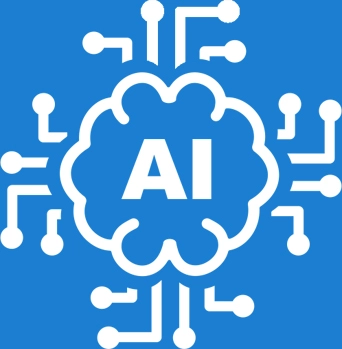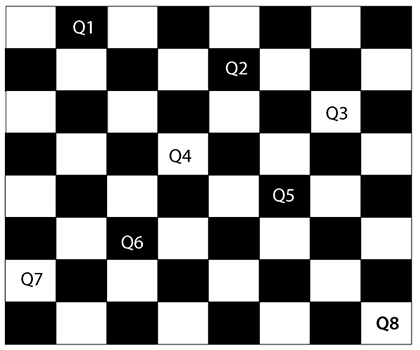


Problem-solving in AI includes various techniques like efficient algorithms, heuristics, and performing root cause analysis to obtain desirable solutions. For a given problem in AI, there may be various solutions by different heuristics and at the same time, there are problems with unique solutions. These all depend on the nature of the problem to be solved.
Each problem given to an AI is with different aspects of representation and explanation. The given problem has to be analyzed along with several dimensions to choose the most acceptable method to solve. Some of the key features of a problem are listed below.
The above-listed characteristics of a problem are called 7-problem characteristics. The solution for the given problem must take place under these characteristics.
Problems in AI can basically be divided into two types. Toy Problems and Real-World Problems.
It can also be called a puzzle-like problem which can be used as a way to explain a more general problem-solving technique. For testing and demonstrating methodologies, or to compare the performance of different algorithms, Toy problems can be used. Toy problems are often useful in providing divination about specific phenomena in complicated problems. Large complicated problems are divided into many smaller toy problems that can be understood in detail easily. Sliding-block puzzles, N-Queens problem, Tower of Hanoi are some examples.
As with the name, it is a problem based on the real world. Real-world problems require a solution. It doesn't depend on descriptions, but with a general formulation. Online shopping, Fraud detection, Medical diagnosis are some examples of real-world problems in AI.

Eight queens puzzle

The problem here is to place eight chess queens on an 8*8 chessboard in a way that no queens will threaten the other. If two queens will come in the same row, column, or diagonal one will attack another.
Consider the Incremental formulation for this problem: It starts from an empty state and the operator expands a queen at each step.
Following are the steps involved in this formulation:
Let us discuss the techniques like Heuristics, Algorithms, Root cause analysis used by AI as problem-solving methods to find a desirable solution for the given problem.
A problem-solving algorithm can be said as a procedure that is guaranteed to solve if its steps are strictly followed.
Let's have a simple example to get to know what it means:
A person wants to find a book on display among the vast collections of the library. He does not know where the book is kept. By tracing a sequential examination of every book displayed in every rack of the library, the person will eventually find the book. But the approach will consume a considerable amount of time. Thus an algorithmic approach will succeed but are often slow.
A problem-solving heuristic can be said as an informal, ideational, impulsive procedure that leads to the desired solution in some cases only. The fact is that the outcome of a heuristic operation is unpredictable. Using a heuristic approach may be more or less effective than using an algorithm.
Consider the same example discussed above. If he had an idea of where to look for the book, a great deal of time could be saved. This can be said as searching heuristically. But if one happens to be wrong on the first trial, He has to try another heuristic.
The frequently used problem-solving heuristics are
WORKING FORWARD
It is a forward approach problem-solving solution. In this method, the problem is solved from the beginning itself and working to the end.
WORKING BACKWARD
It is a backward approach problem-solving solution. Here the problem is solved from the endpoint or goal to steps that led to the goal.
MEANS-ENDS ANALYSIS.
A problem-solving technique where a mixture of the above two directions. This method is appropriate for solving complex and large problems. MEA is a strategy to control the searching procedure in problem-solving. It is centered on evaluating the difference between the current state and the goal state. First, the difference between the initial state and the final state is calculated. Then select various operators for each difference. The application of these operators will reduce the difference between the current state and the goal state.
GENERATE-AND-TEST.
The Generate-and-test method is a problem-solving heuristics that involve an alternate set of actions in a random method. Each alternate method is to check whether it will solve the problem. It ensures that the selected best possible solution is checked against the generated possible solutions.
| Algorithm | Heuristics |
|---|---|
|
|
The terms heuristics and algorithms overlap somewhat in AI. A heuristic may be a subroutine that can be used to determine where to look first for an optimal algorithm. Heuristic algorithms can be listed under the categories of algorithms. In a sense of heuristics are algorithms, heuristic makes a guessing approach to solve the problem, granting a good enough answer rather than finding the best possible outcome. The level of indirection is the main difference between the two.
Like the name itself, it is the process of identifying the root cause of the problem. The root cause of the problem is analyzed to identify the appropriate solutions. A collection of principles, techniques, and methodologies are used to identify the root causes of a problem. RCA can identify an issue in the first place.
The first goal of RCA is to identify the root cause of the problem. The second goal is to understand how to fix the underlying issues within the root cause. The third goal is to prevent future issues or to repeat the success.
The core principles of RCA are: